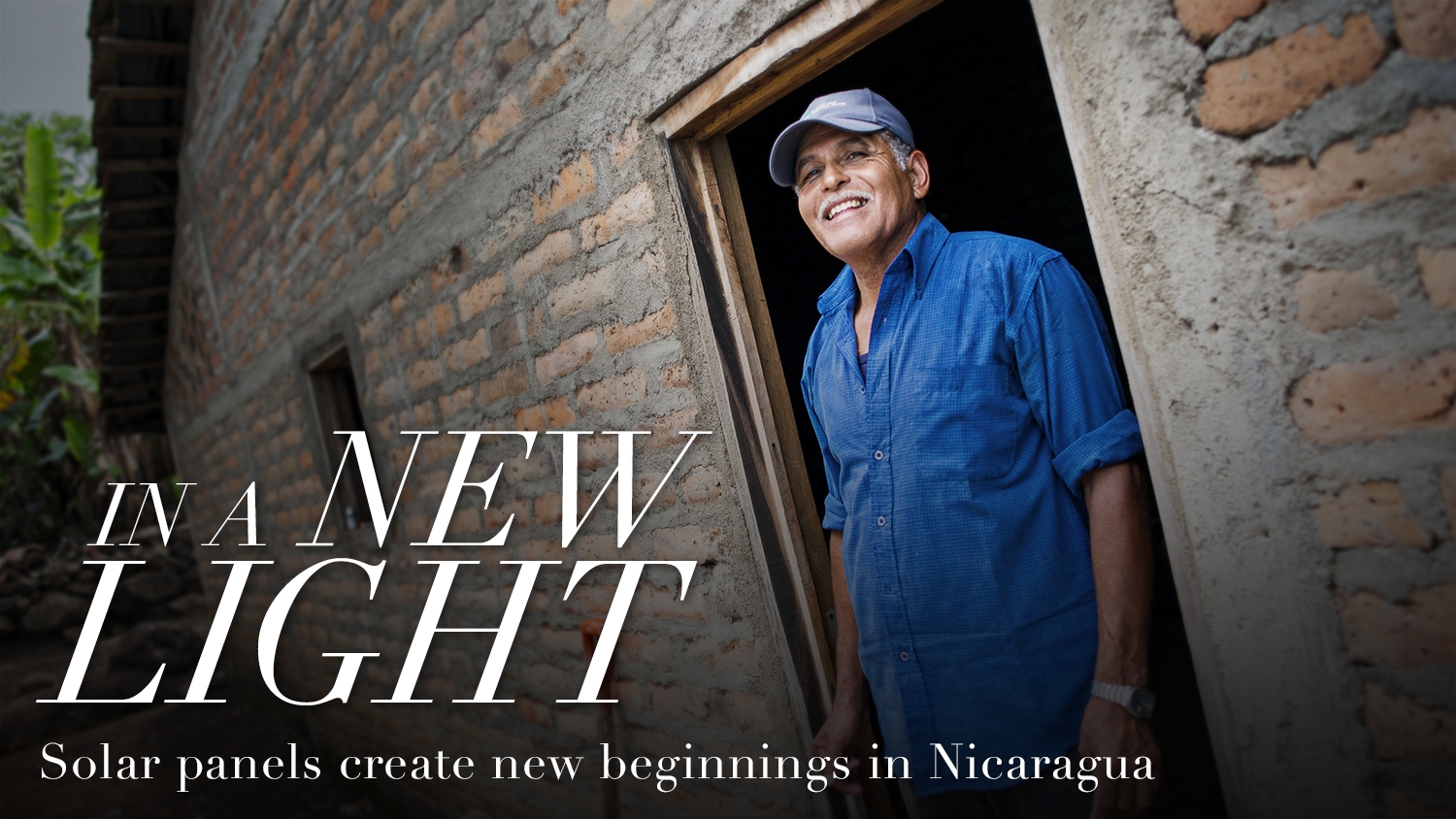
Access to Clean Energy

Preserve the Environment
The impacts of environmental degradation such as deforestation and soil erosion throughout Nicaragua are immense, and consequences of global issues like climate change are evident. Remote Nicaraguans who have little access to utilities like electricity or gas suffer from poor indoor air quality as smoke from cooking fires and light often accumulates in homes.
Many of our technologies contribute to the reduction of greenhouse gas emissions and preservation of the environment. Respiratory health improves as air in homes becomes cleaner, and instead of spending evening hours collecting wood Nicaraguans can spend evening hours reading, studying and spending quality time with family.
Our Solutions
Our Solutions

Solar Power
Provide a reliable source of electricity. Provide 4-5 hours of light for the entire home. Improve health by reducing smoke inhalation and improve ability to maintain hygiene. Improve education and economic opportunities, increasing confidence.
-
“Before EOS’ help we had to use an oil lamp that can cause several health issues because of the smoke it produces. This smoke also effects my vision, which makes it very difficult for me to study at night. Now, I have the ability to use solar energy to study at night.”
Nicaragua has the lowest electricity generation and lowest percentage of population with access to electricity in Central America. About 25% of Nicaraguans do not have electricity, and about 60% of those are in rural areas. For remote communities, conventional grid electricity is unavailable and therefore decentralized systems are the only option for obtaining access to electricity in their homes.
There are many dangers and disadvantages of non-electric light. The World Bank estimates that breathing kerosene fumes is the equivalent of smoking two packs of cigarettes a day, exposing women and children especially to respiratory illnesses. The risk of fire and toxic exposure due to accidents is high. For families living on just a few dollars a day, the cost of $5-15 per month on fuel for light is significant. Additionally, Lawrence Berkeley National Laboratories found the main source of greenhouse gases in the developing world come from non-renewable lighting sources such as the burning of kerosene or diesel. A typical household burning 1 quart of kerosene per week releases nearly 300 pounds of CO2 into the atmosphere per year.
These energy-efficient systems consisting of solar panels, LED light bulbs, and batteries, have a low environmental impact. By bringing affordable solar energy to homes, families can study, make products for sale, read, and enjoy their evening in light, without inhaling smoke. Our solar electrical systems include inverters that provide families with outlets that can charge low-powered electrical devices such as cell phones, providing access to information including weather and emergency notices. Electric light also gives families something more intangible, a sense of self-worth and hopefulness, that they are joining the rest of the modern world. One woman we interviewed having solar installed said, “to gain access to electricity would be like a blind person gaining sight.”

BioGas Stove
Biogas stoves convert animal waste into energy for cooking. Provides five hours of clean-burning “biogas” per day. Captures methane emissions similar to waste treatment plants present in developed nations. Saves a family approximately $28.50 per month.
-
“Before by using firewood, I could only make foods that required excessive heat, like beans. On this one I’m able to cook everything at the same time, and have all the food ready in 30 minutes. As time passed, I was able to save money because I didn't have to buy gas.”


